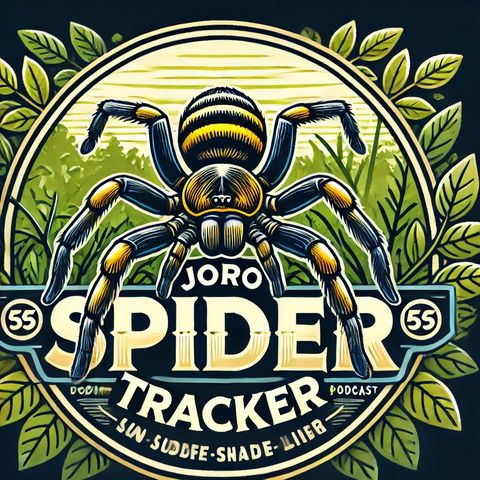Captivating Joro Spiders Conquer the Southeastern U.S. with Unique Hunting Tactics and Rapid Expansion

Download and listen anywhere
Download your favorite episodes and enjoy them, wherever you are! Sign up or log in now to access offline listening.
Captivating Joro Spiders Conquer the Southeastern U.S. with Unique Hunting Tactics and Rapid Expansion
This is an automatically generated transcript. Please note that complete accuracy is not guaranteed.
Description
The Joro spider, scientifically known as Trichonephila clavata, is an exotic species that has recently been making headlines due to its rapid spread and unusual hunting tactics. Originally native to...
show moreThe name "Joro" comes from the Japanese term jorō-gumo, which can be translated as "entangling bride." This name alludes to the intricate and vividly colored webs they spin, which are not just mesmerizing to humans but also deadly traps for their prey. These spiders are particularly large compared to other spiders in their invasive range. Female Joro spiders can have a leg span of about 4 inches, which is strikingly larger than the males who are significantly smaller.
One of the intriguing aspects of the Joro spider is its ability to ensnare and consume prey much larger than typical for spiders of its size, including fireflies. Research has revealed that Joro spiders have developed a method to attract and catch fireflies, which are known for their bioluminescent properties. The spiders spin webs that are strong and resilient, enabling them to withstand the struggles of larger insects. This quality not only helps in capturing more food but may also support their survival and expansion across varied climates.
The spread of Joro spiders has raised questions and concerns amongst scientists and the public alike. Their ability to adapt to different environments quickly, coupled with their fast reproductive rates, suggests that they might expand further into human-populated areas. This expansion is not deemed particularly harmful to humans, as Joro spiders are not known to be aggressive or dangerously venomous. However, the ecological impact of their proliferation is still under close monitoring. There are ongoing studies assessing how the introduction of the Joro spider affects local ecosystems and other species, especially native insects and competing arachnids.
Their remarkable adaptability and resilience make the Joro spider a subject of fascination and concern. This combination of physical robustness, impactful predation strategies, and potential impacts on biodiversity casts the Joro spider as both an interesting subject of scientific study and a possible indicator of ecological shifts prompted by invasive species. As they continue to spread, further research will be crucial in understanding the full scope of their impact and how it can be managed effectively.
Information
| Author | QP-4 |
| Organization | William Corbin |
| Website | - |
| Tags |
Copyright 2024 - Spreaker Inc. an iHeartMedia Company
